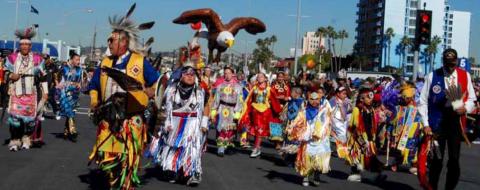<p></p>
<figure id="attachment_15895" aria-describedby="caption-attachment-15895" style="width: 300px" class="wp-caption alignright"><a class="highslide" onclick="return vz.expand(this)" href="http://laprensa-sandiego.org/wp-content/uploads/2012/01/Soaring-Eagles… loading="lazy" class="size-medium wp-image-15895" title="Soaring Eagles" src="http://laprensa-sandiego.org/wp-content/uploads/2012/01/Soaring-Eagles-…; alt="" width="300" height="118" srcset="https://dev-laprensa.pantheonsite.io/wp-content/uploads/2012/01/Soaring… 300w, https://dev-laprensa.pantheonsite.io/wp-content/uploads/2012/01/Soaring… 1024w, https://dev-laprensa.pantheonsite.io/wp-content/uploads/2012/01/Soaring… 1337w" sizes="(max-width: 300px) 100vw, 300px"></a><figcaption id="caption-attachment-15895" class="wp-caption-text">The Soaring Eagles were participants in the Harbor Balloon parade.</figcaption></figure>
<p align="justify">Soaring Eagle 2012 dance workshop feels the chill of the winter season and the changes of the coming ‘Leap year’. This is the appropriate time to speak to the skill of Native American calendar accuracy. As compared to the errors of the Euro-based system we fudge and adjust to constantly-1/4 day here, one day there.</p>
<p align="justify">Middle America has two Tribal systems of calendar that are superior: Mayan and Aztec. In the USA Southwest the Pueblo and Hopi people have utilized seasonal and daily monitors that revealed the best time for planting and ceremonies.</p>
<p align="justify">The accepted definition of a solar tropical year is approximately 365.2422 days. The Gregorian calendar year has an average length of approximately 365.2425 days. The Gregorian calculation for a year is ((400 * 365) + 100 – 3 = 146,097) / 400 = 365.2425. The Mayan Calendar year comparison has an average length of approximately 365.2420 days. The Mayan calculation for a solar year is divided by 5,124 year periods which give the calendar the increased accuracy.</p>
<p align="justify">The Central Mexican Tribal calendar system is best known in the form that was used by the Aztecs. The years and cycles were recorded in the tonalpolualli or the sacred almanac of days. The Mayan referred to their almanac as the tzolkin. The Mayan tzolkin and the Aztec tonalpolualli were similar. But similar calendars were used by the Mixtecs, Zapotecs, Tlapanecs, Otomi, Matlatzinca, Totonac, Huastecs, P’urhépecha and at Teotihuacan. These calendars differed from the Maya version mainly in that they didn’t use the long count to fix dates into a larger chronological frame than the 52-year cycle.</p>
<p align="justify">To convert the ancient May-an calendar to the Gregorian (or modern) calendar, scholars use a numerical value (called the GMT). But Gerardo Aldana, a professor at the University of California, Santa Barbara, says the data supporting the widely-adopted conversion factor may be invalid. In a chapter in the book “Calendars and Years II: Astronomy and Time in the Ancient and Medieval World,” Aldana casts doubt on the accuracy of the Mayan calendar correlation, saying that the 2012 prophecy as well as other historical dates may be off.</p>
<p align="justify">Historically Tribal America has been a major influence in the political and ethical basis of this great country. We can document influential human values, cultural lifestyles and political ideas that have become ingrained in the national American spirit.</p>
<p align="justify">We continually look forward to experienced, contest winners and past head dancers to mentor the children in the movement and steps of the American Indian traditional dance. These weekly immersions into traditional tribal culture and participation in public American Indian gatherings allow us to endure and remain a vital cultural, political, social, and moral presence in the San Diego region. We are fortunate to have volunteers to share their dance and song experience and truly blessed to have children eager to have a good time doing Indian things.</p>
<p align="justify">We invite you to bring your children and family to learn by observation and participation, a traditional way, the pow wow dance, music and also enjoy the friendship of the gatherings. San Diego American Indian pow wow trails lead to the Old Town, Harold J. Ballard Parent Center: 2375 Congress St, San Diego, CA 92110.</p>
<p align="justify">Also, remember to bring a potluck item or side dish for the Soaring Eagles evening feast. Everyone is welcome to attend the dance workshops.</p>
<p align="justify">Soaring Eagle 2012 Workshop schedule<strong><strong><span style="font-size: small;">:</span></strong></strong></p>
<p align="justify">January 4, 11, 25; February 1, 8, 23, 30 all Wednesdays</p>
<p>March, 7, 14, 28 April 11, 25, May 2, 9, 23, and June 13 all Wednesdays</p>
Image
Image

Category